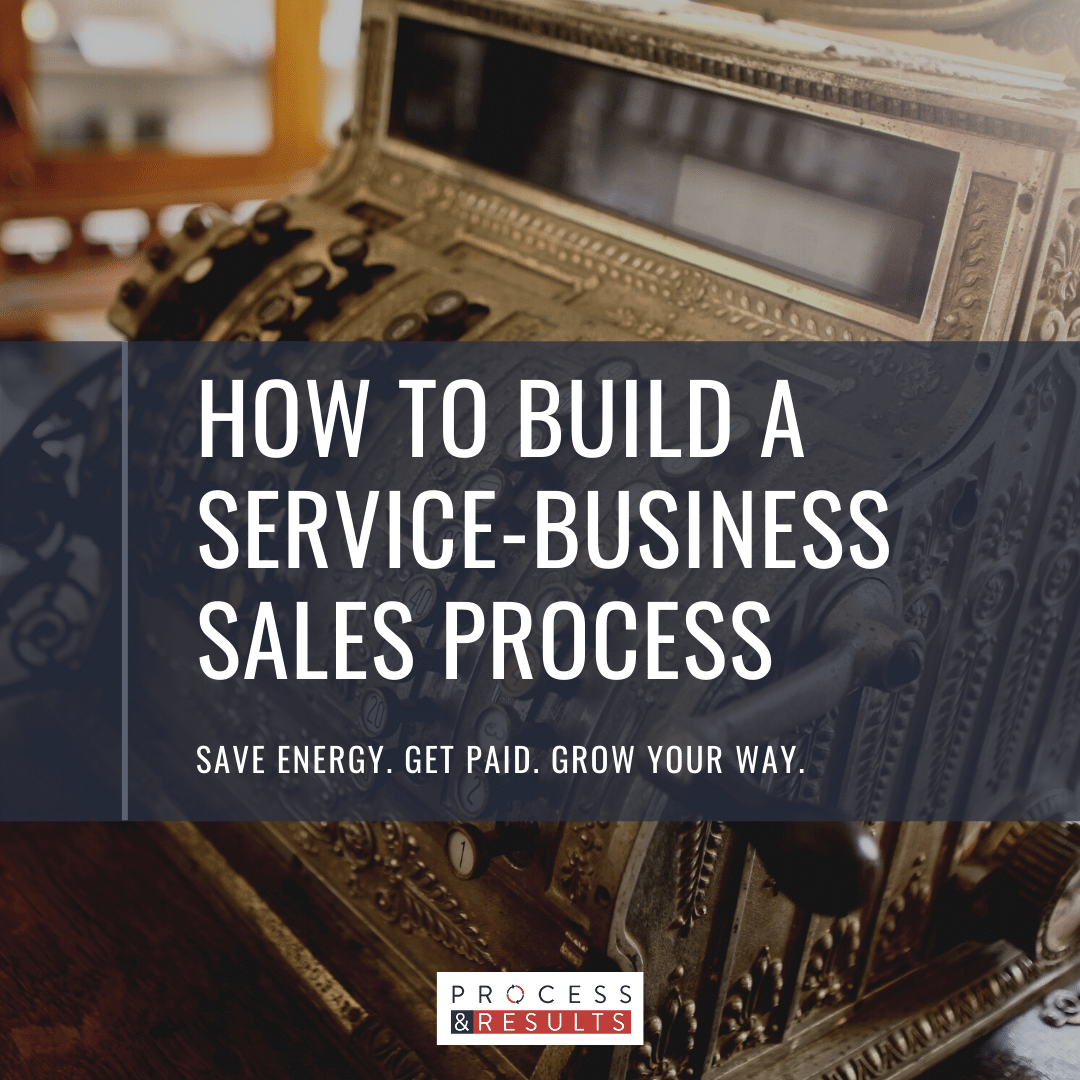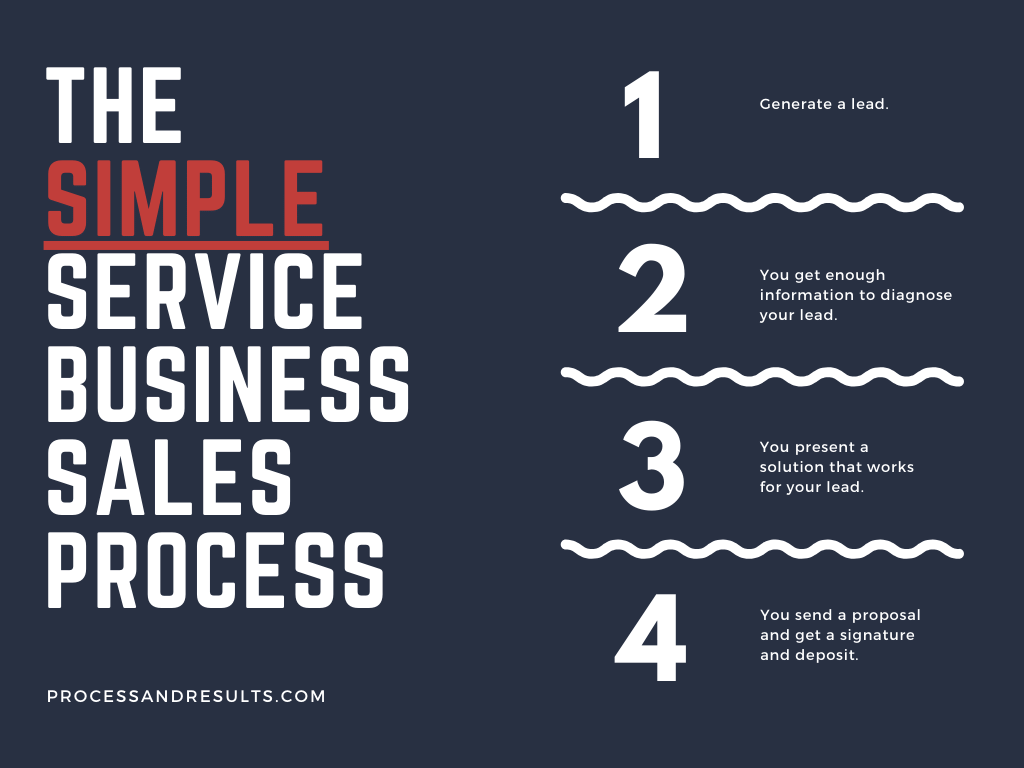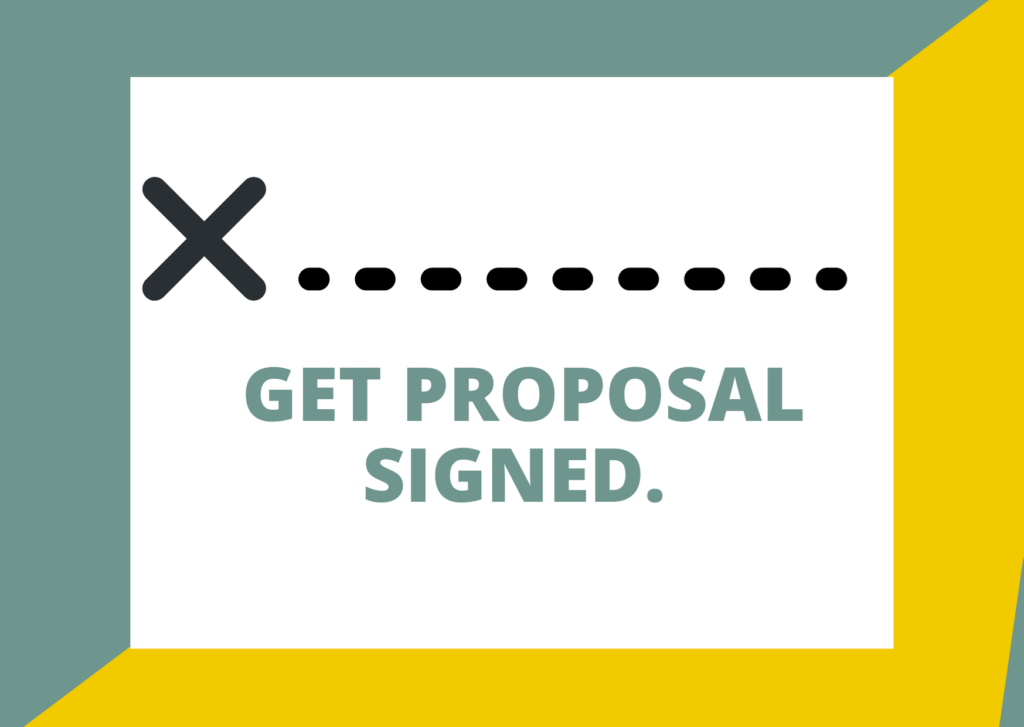
How To Build a Minimum Viable Sales Process For Your Business
Let’s get paid, OK?
So many service businesses make it way harder than necessary to do business with them. They have such a mushy process that they rely on the customer for next steps.
Customers are confused, and the businesses are left with the attitude that their customers are just tire kickers.
They are often very good at what they do, so they assume that that will shine through and their customers will be excited to work with them.
Sometimes this happens, but more often, there is some area in business creation and development where they struggle.
We believe in building a sales process for a lot of reasons.
The biggest one is that when we do, we can improve the results we deliver at every phase of the process.
When we start, here are some things to keep in mind:
- Your customers should never have to think: If any part of your process doesn’t have a bridge to the next part, you’ve got to fix that.
- Make it simple to get a price: Sometimes customers have to get a quote, or bring something into see you. The more ways you can reduce that pain, the better off you are going to be.
- Present Value: You want to present value in whatever solution you have, and it’s where you can win vs. low priced competitors.
- Customers Love Rules: They love to know when they are paying and when they are getting their things. The more clearly you can spell that out the more confident they are gonna be in whatever solution you have.
The Basic Sales Process For Service Businesses.

Step 1: You Generate A Lead
There are lots of ways someone can become a lead.
- We can prospect for them
- They can be referred by someone
- They can respond to an ad
But, the important part is that at some point they have taken some deliberate action to move towards doing business with us. This might be just requesting more information, permitting an appointment, or even asking a friend about the experience that they had with our service.
A little action + a little intention = a lead.
Step 2: You Get Enough Info From Your Lead To Perform a Diagnosis
The next main step is that the lead provides enough information that should allow you to understand how much it will cost to serve them.
They will have to provide the information you need to know what a solution will look like.
This can be as simple as them telling you what kind of tires they have on their car, or as complex as letting them see their payroll information. In any case, the customer has to provide some information so you can serve them properly.
What’s important is that you get all your information you have to have before you go to your next step. Giving a quote prematurely means that you are in a position where you may have to honor a price when you missed out on something.
Step 3: You Present A Solution That Works
Now you have to deliver what your solution should look like.
The purpose is to help your customer understand what your solution is going to look like.
This will include key information like:
- How much is it going to cost?
- What might change the cost?
- When will it be delivered?
- What information or assets are needed before we can start the process?
- What will the customer’s responsibilities be?
- What happens when something unexpected happens?
- What happens if we want to change the plan midstream?
There are specific ways of delivering this work so that we increase the likelihood of having great customers over the long haul.
Step 4: You Get a Signed Proposal And A Deposit

The next part will be that you give your lead an offer, estimate or proposal. You always want to get a signature on whatever you do.
With a few exceptions, you want to collect a deposit at the time of proposal. This will ensure that we’re getting our clients in the habit of paying on time, and that will be an enormously helpful part of delivering a quality experience that’s fair to everyone.
Getting this part done completes the “basic” sales process. But when we’re being strategic, we will have designed a sales process that begins a long term, mutually beneficial relationship with our customers.
Implementation
Start this process by putting everything into your CRM’s pipeline function; we can begin with these 4 stages:
- Lead generated: somehow, you get a lead.
- Lead diagnosed: you get the information to know if you can help.
- You make your presentation: you present your solution
- You send your proposal: you work together.
We’ll learn quickly where things break down when we have them in stages like this. If leads are coming in but aren’t of sufficient quality to go to the next step, you’l know.
Get good at each individual part so that you can make this work for your business.
Notes:
We’ve ignored “follow up” on purpose.
This is because while it’s often a necessary step to help move people from one point to another in your sales process, it’s not always mandatory to make any individual sale. In theory, someone could buy from you in moments without you having to chase them down.
Once we get the basics in place, and easily executed, we can do more thing.
We usually recommend that most businesses deliver work on a “pilot-to-permanent” system.
This is simply an initial project that’s valuable and profitable but limited in scope for you and your client to decide together if you are a fit. If everything goes swimmingly, it makes sense to offer your client larger engagements as they’ve proven themselves to you.
Most of the time this will lead to the best profits, long time.
Like this post? Get A New Business Process Every Monday
Join our newsletter, and we'll send you a new business process every Monday.
We cover everything that service businesses need to improve.
